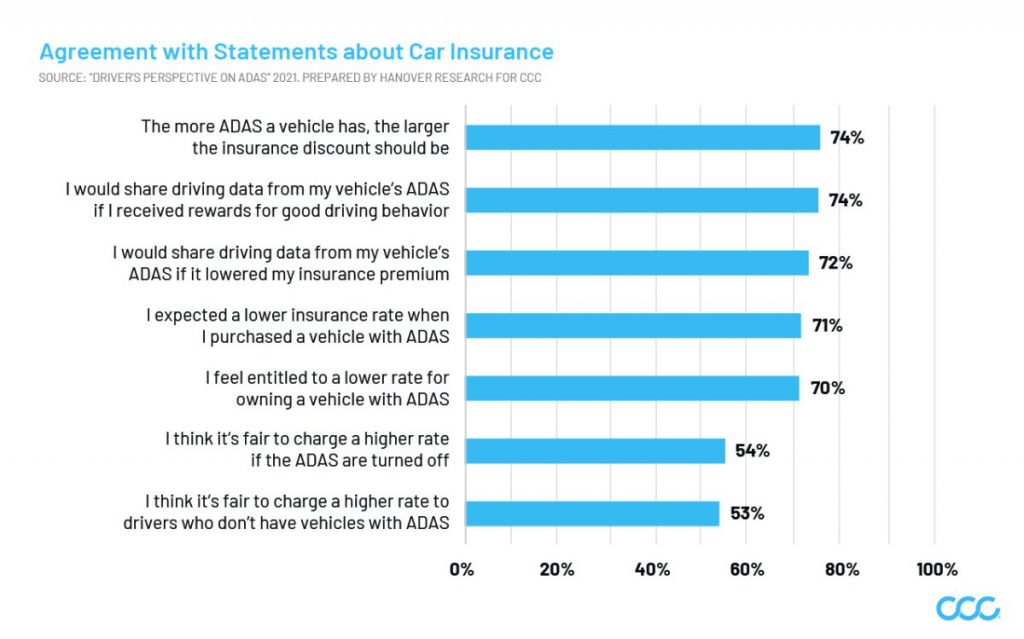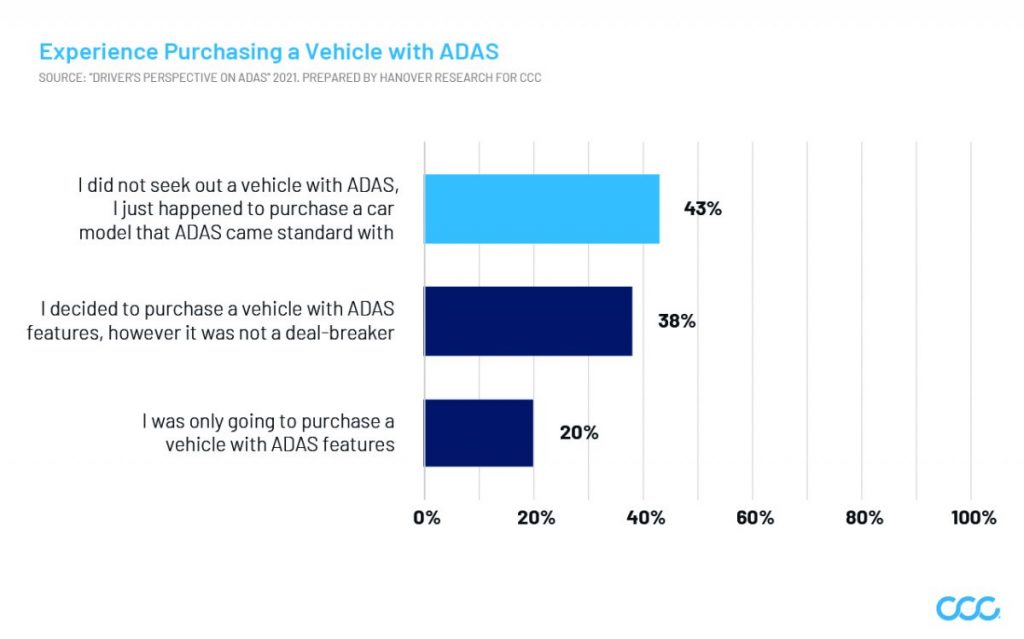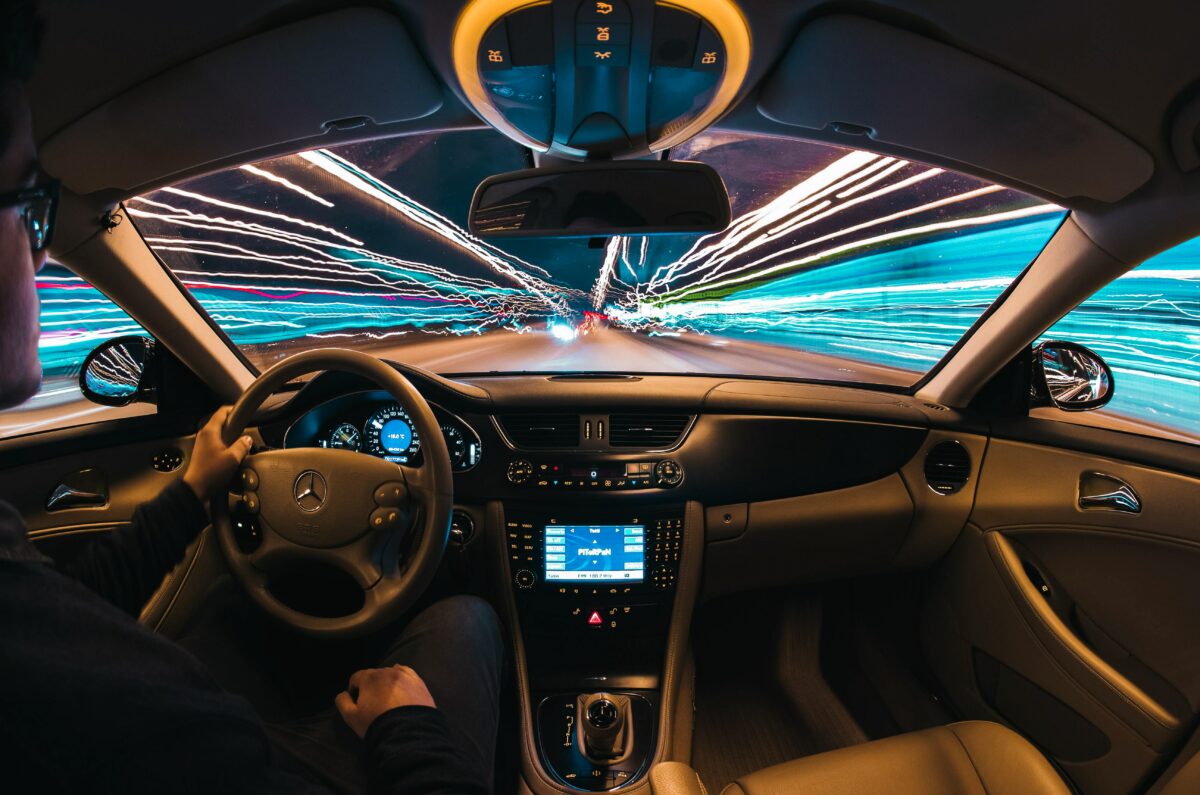Advanced Driver Assistance Systems (ADAS) innovations are fundamentally and continuously changing the driving experience. What was once a luxury is now being integrated into most newer model year vehicles sold in the US. And while the safety benefits of ADAS have been widely studied, user behaviour and perception has largely been overlooked.
To help bridge this information gap, a recent CCC Intelligent Solutions (CCC) study explored drivers’ familiarity, expectations, and behaviours surrounding these technology-driven safety features. The data showed that while most drivers believe ADAS creates a safer driving experience, many remain sceptical of the technology. Plus, more than half of all drivers that own a vehicle with dynamic driving assistance believe ADAS can increase the chance of an accident in some situations, and nearly half of drivers have turned it off.
What do drivers really think of ADAS?
Drivers are becoming more familiar with ADAS as more new cars include these technologies. Familiarity, however, is not driving purchasing decisions. Despite more than half of drivers indicating they specifically sought out ADAS features when they purchased their current vehicle, only 20% said they went into the buying process knowing they wanted to purchase a vehicle equipped with ADAS.

Beyond the path to purchase, there is also hesitancy in leveraging the features when drivers have them built into their cars. CCC’s research found that 70% of drivers that operate a vehicle with ADAS have disabled them at one point. The top reasons for doing so includes a belief that the features were not working properly, the noises/lights were distracting or that the technology was simply not needed.
And though it may sound surprising that drivers are knowingly turning off safety features, it is not uncommon for there to be some level of resistance to a new feature or technology. Take the seat belt for example. It took years—and many public safety campaigns and the passage of state laws—to get the majority of drivers to reach for the seat belt every time they entered a car.
What does this mean for drivers?
ADAS has many benefits, but it also has made repairs and auto insurance more complicated. As more technology is embedded into cars, the cost of the average repair goes up. This means fender benders are no longer just that. Damage to a bumper could require a backup camera replacement, or damage to a sideview mirror may impact blind spot detection capabilities. On top of the increased complexity and cost, repair shops need to take customer expectations into account. Nearly three-quarters of drivers expect their ADAS to work just as well as it did pre-collision, and one-quarter expect it to be slightly less effective.

Technology will help repair facilities and insurance companies stay competitive, but it also means there is more information for decision makers to take into consideration. This includes everything from more complex repairs to demand for more personalised insurance rates. To overcome these challenges, understanding how and why drivers are using ADAS is critical—and will ultimately help boost customer satisfaction, as well as improve retention and recruitment of new customers.
And when it comes to insurance companies, despite the risk of more expensive repairs, they need to weigh the fact that ADAS has been shown to be effective at reducing crashes in the scenarios in which they are designed to work and can reduce the severity of an accident when one does occur. There is also an opportunity to capitalise on the willingness of drivers to share driving data in exchange for good driving discounts.

Lastly, understanding drivers’ expectations is important for insurance companies looking to boost retention and recruitment of policyholders. 74% of drivers say they would share driving data from their ADAS if they received rewards for good driving behaviour and it lowered their insurance premium. This is a win-win scenario—insurance companies have the insight needed to offer more data-driven policies, and drivers get more transparent pricing and access to discounts.
Preparing for tomorrow
As technology advances and the cost of these technologies decrease, there is little doubt that the car of the future will include more features that are focused on improving safety and making the driving experience more enjoyable. These same features, however, will increase vehicle complexity and make fixing cars, pricing out policies, processing claims and the overall future of driving more complicated. Insurers and collision repairers need access to data and insights that will help them understand what technology is in a given vehicle to properly insure vehicles; know which ADAS were engaged in the moments leading up to an accident; and provide consistent repairs.
What’s important to remember is that no matter how much the car of the future changes, the pace of innovation will be metered by how quickly customers accept these changes. Driver behavior is a powerful hurdle to evolution and a primary driver of today’s complex environment where variables in driver acceptance and vehicle adoption combine to create an increasingly complex landscape.
About the author: Susanna Gotsch is Senior Director, Industry Analyst, at CCC Intelligent Solutions



